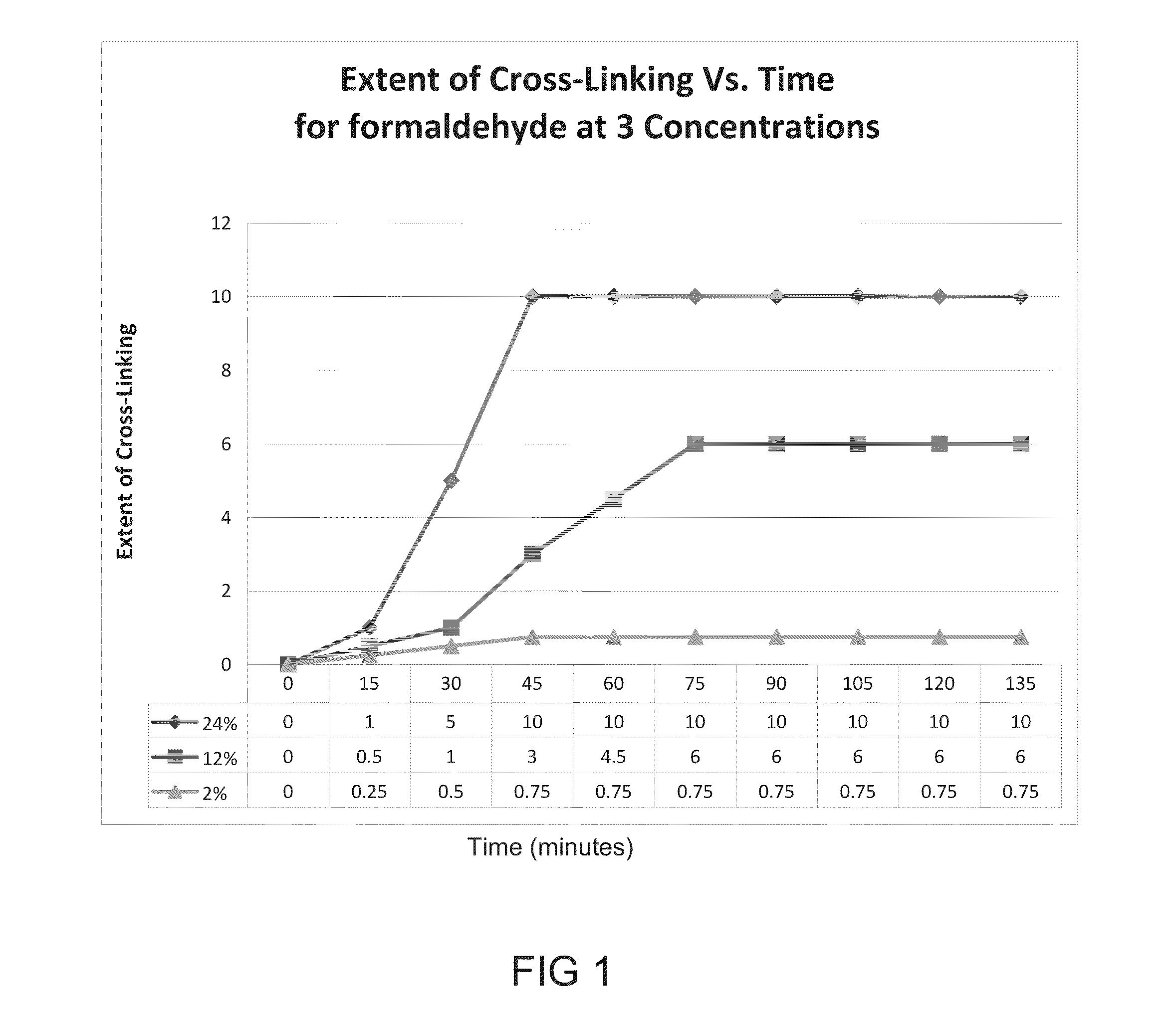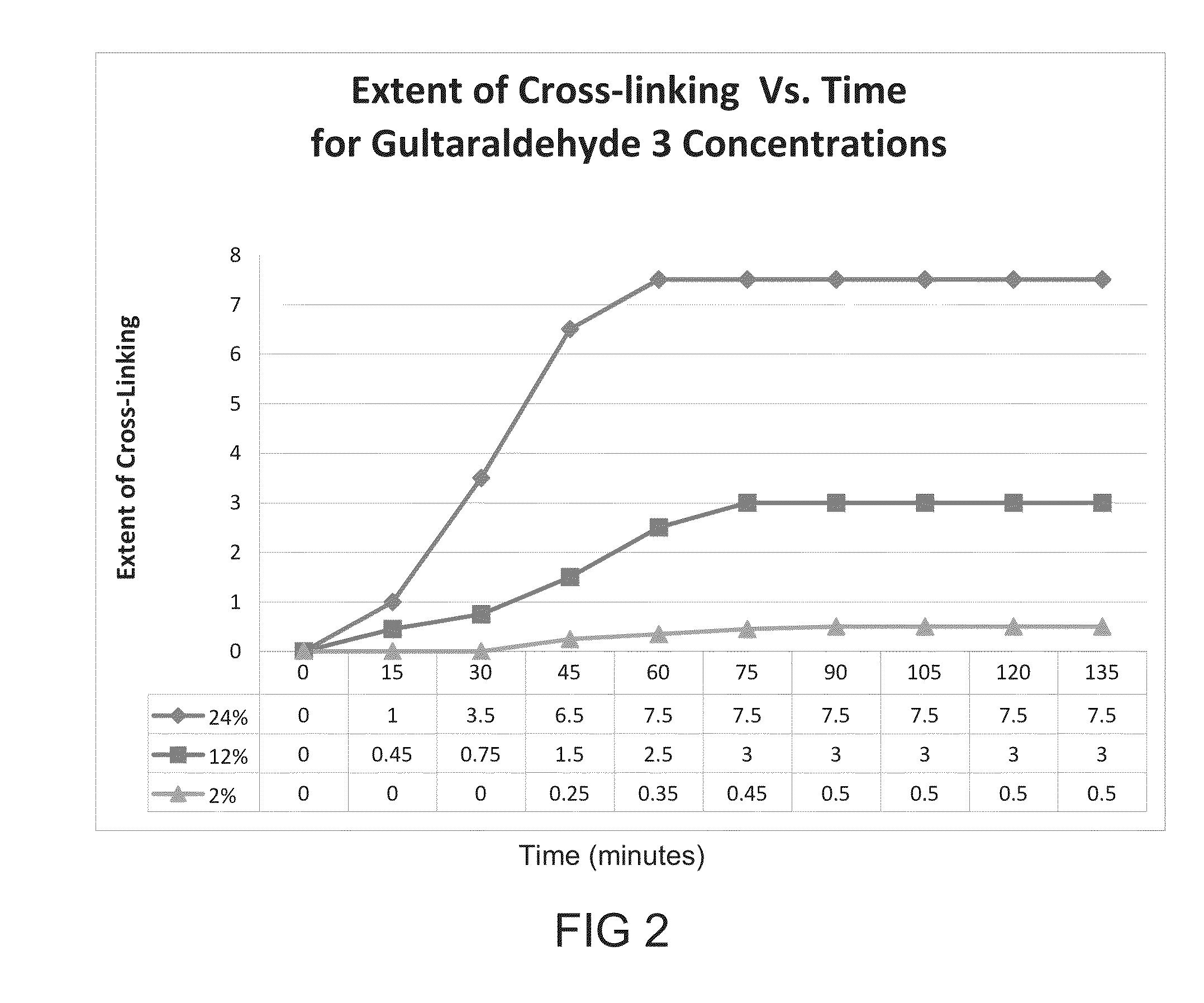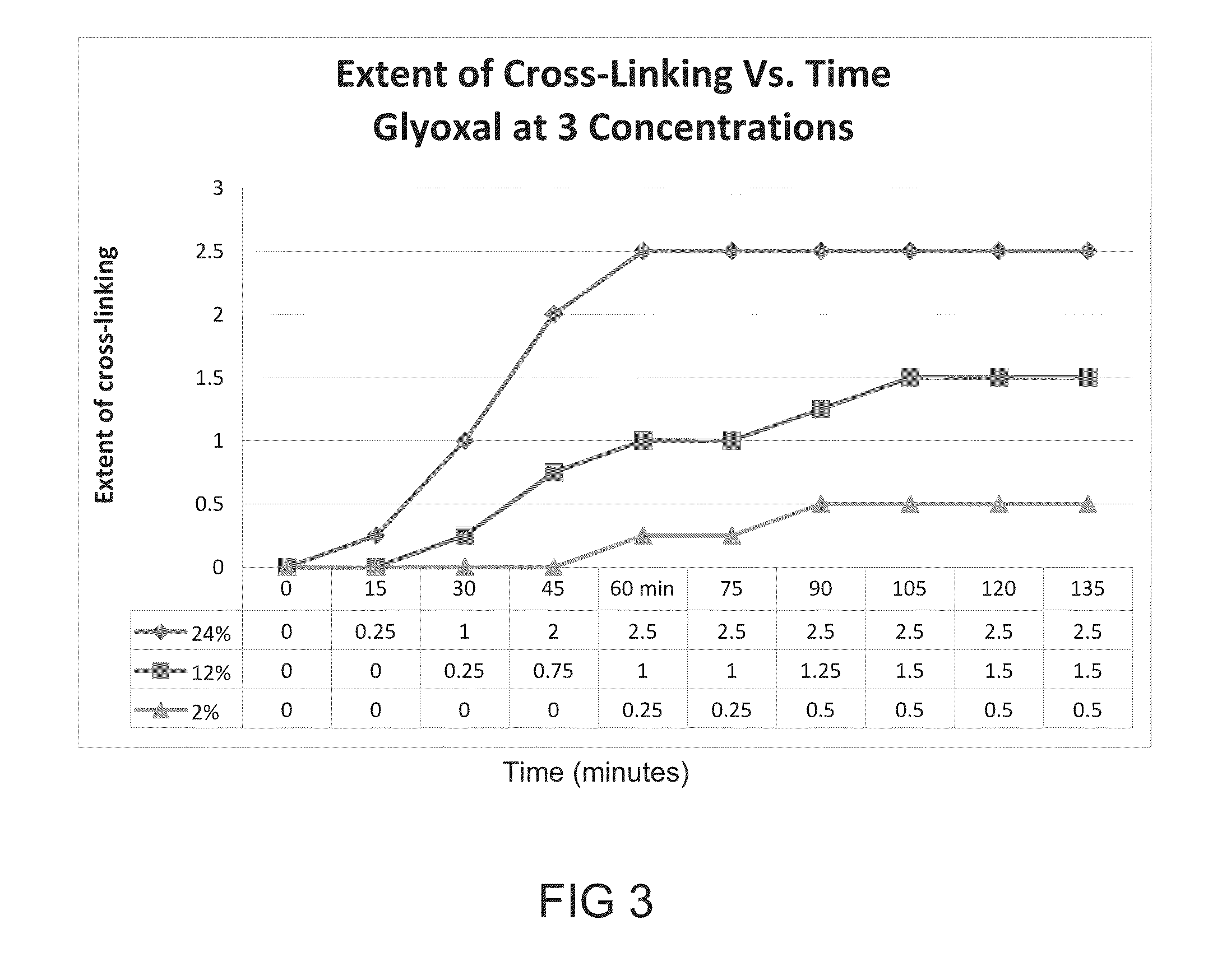Compositions and methods for treating hoof diseases
a technology for hooves and compositions, applied in the field of hoove disease treatment, can solve the problems of lame hooves, clubbed hooves, loss of body weight, etc., and achieve the effect of improving efficiency and improving approach
- Summary
- Abstract
- Description
- Claims
- Application Information
AI Technical Summary
Benefits of technology
Problems solved by technology
Method used
Image
Examples
example 1
7.1 Example 1
HealMax Wart Spray I Development and Field Testing
[0124]
HealMaxHealMaxWart Spray I (%)Herd Spray (%)Glutaraldehyde 50%2525Deionized Water69.3469.68C.O. 720 (ethoxylated nonyl phenol)2.602.60Methyl Salicylate1.351.35Propylene Glycol1.351.35Xanthan Gum0.34—Green Dye0.020.02
[0125]A trial was conducted on a 500 cow commercial Holstein dairy in Hanford, Calif. (Fragosa & Sons) which was experiencing a rapid outbreak of digital dermatitis. Dairy had been using an acidified copper sulfate footbath once a day for 4-5 days per week. 10% of dairy cows (50) showed signs of clinical lameness due to advanced digital dermatitis lesions. A qualified hoof trimmer, using a trimming chute, inspected and selected 5 cows with visible lesions due to digital dermatitis. These cows were not allowed to pass through the regular footbath during the 4 day trial period.
Lesion Severity: The severity of each lesion was scored as follows:0No visible lesion.1Early Stage: Skin slightly broken, redness,...
example 2
7.2. Example 2
Cross-Linking Tests and Development of HealMax Wart Spray II
[0132]
ComponentsHealMax Wart Spray II (%)Glutaraldehyde 50%8.3Glyoxal 40%16.66C.O. 7202.60(ethoxylated nonyl phenol)Methyl Salicylate1.35Propylene Glycol1.35Polymer gum0.50QUAT BTC85510.00Deionized WaterBalance
[0133]Additional experiments were conducted in order to further develop a product, optionally using substantially less glutaraldehyde, but with the same or better performance than the presently taught novel HealMax Wart Spray I. It was conceived that such a novel composition for the prevention and / or treatment of one or more infectious diseases of the hoof in animals could be formulated by using less glutaraldehyde in order to reduce the cost and any other potential issue associated with use of higher concentrations of glutaraldehyde. The components used were Glutaraldehyde (Dow, BASF), C0720 (Rhodia, Huntsman), methyl salicylate (Polarome), propylene glycol (Dow), xanthan gum (AEP Colloids) and green dy...
example 3
7.3 Example 3
Field Testing
[0142]HealMax Foaming Herd Spray was tested at Legacy Farm LLC, Plainview Tex. where an outbreak of hairy heel warts was occurring. Approximately 1000 cattle were treated with a power foamer and HealMax Foaming Herd Spray. Of these 1000 cattle, approximately 9% of the herd exhibited hairy heel wart lesions of various degrees of severity. 30% of cows with hairy heel warts lesions were in advanced stages classified as severe, 45% exhibited lesions that were moderately severe, and 25% of lesions were in the early stages. The foam was applied directly to open wart lesions caused by digital dermatitis while cattle walked to the milking parlor as well as to hooves that were unaffected by lesions. Foam was applied for two consecutive days.
[0143]The results showed an overall 81% elimination in hairy heel wart lesions when evaluated by the Hoof Trimmer one week after the second application of the foam with the remaining cows requiring an additional treatment. Of the...
PUM
 Login to View More
Login to View More Abstract
Description
Claims
Application Information
 Login to View More
Login to View More - R&D
- Intellectual Property
- Life Sciences
- Materials
- Tech Scout
- Unparalleled Data Quality
- Higher Quality Content
- 60% Fewer Hallucinations
Browse by: Latest US Patents, China's latest patents, Technical Efficacy Thesaurus, Application Domain, Technology Topic, Popular Technical Reports.
© 2025 PatSnap. All rights reserved.Legal|Privacy policy|Modern Slavery Act Transparency Statement|Sitemap|About US| Contact US: help@patsnap.com



